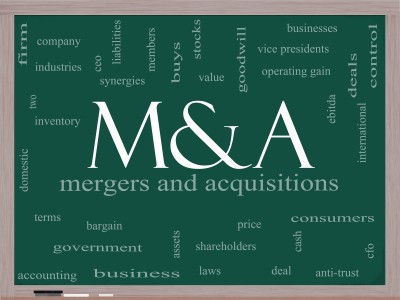Firm Management
How Firms Can be M&A Deal-Ready in 2024
If you are thinking of becoming either a buyer or a seller this year, there are critical steps to pursue that can improve your odds of success.
Jun. 18, 2024

By Ira Rosenbloom.
Mergers and acquisitions (M&A) activity in the accounting industry has been robust and competitive—and all signs point to a continuation of that trend, especially in certain markets and for certain firms.
If you are thinking of becoming either a buyer or a seller this year, there are critical steps to pursue that can improve your odds of success. Here are five important steps for both sides at the negotiating table.

Thanks for reading CPA Practice Advisor!
Subscribe for free to get personalized daily content, newsletters, continuing education, podcasts, whitepapers and more...
Already registered? Login
Need more information? Read the FAQ's
- Clarify the Vision. Generally, acquirers look to make more money, grow their market share, and grow their teams to offer more or specialized expertise and improved client service. Firm leaders need to figure out first what they want the future firm to look like; in other words, they need to create and clarify their vision for the purpose and outcome.
Firms looking to merge should also have a vision. The more specific the details, the better. Understanding how you plan to provide more services—and to what kinds of clients—will help clarify synergies. Also, detail talent expectations and potential career paths for key team members.
Sharing an exciting vision will motivate parties to proceed and may help overcome roadblocks that could develop.
- Identify and Address Anxieties. M&A brings change. For some, the change will be significant; for others, change may be nerve-wracking.
Teams on both sides should gather concerns and share them internally, then openly with each other. If anxieties aren’t addressed early, it may derail the process later when more time and energy has been invested.
It is not unusual for both sides to have common anxieties around, for example, job security and accountability. Anxiety resolution may need to be reflected in deal terms.
Firms should be prepared to stop the M&A process if pushbacks are insurmountable. The earlier this gets addressed, the better and more productive you will be.
- Prioritize Integration. Ideally both firms will be open to accepting best practices and agreeing to which firms’ policies should be adjusted. Further, most transactions are going to include transitioning certain leaders into retirement, changing roles, or slowing down.
The more comfortable parties are with the plan, the more able they will be to join forces.
Acquirers should be ready with a description of their past transition successes. The firm looking for transition needs to be detailed about timing, skills, and personalities necessary to lock down top clients.
In 2024, all firms continue to be challenged by personnel availability. Both sides need to be confident that the integration and transition is viable and what the problems may be. If integration will take too long, parties may need to terminate discussions or create a staged deal.
- Walk the Walk and Talk the Talk Financially. Finances will be an early barometer for viability. Both sides need to be fluent in the metrics of their firms and have credible market-based demands for deal terms.
Finding a mutual comfort zone for compensation and purchase price/retirement proceeds will be best achieved when parties have a deep and clear understanding for the financial drivers for success.
Both firms should have clear expectations of the combined firm’s finances in the near-term. For example, they should understand how large an investment is needed to advance the agreed-upon business agenda and plan out a timeline for deal ROI realization. Understand revenue and profit for year one, along with a realistic idea of how that will improve.
Smaller firms should understand the overhead structure of the acquirer and be ready to invest in that overhead. Larger firms must be able to deliver efficiencies of scale to help the small firm recoup and grow profits over time.
- Concentrate on Potential. All parties in M&A have money on their minds. Acquirers want to grow top line and bottom line; the other side wants to continue prosperity and gain security.
The more time that goes into determining the potential upside, the better the merger decision will be—and the outcome will be more positive.
Quantify and identify potential early in the conversation. The greater the confidence in the potential, and the higher the potential, the more compelling the opportunity for all.
M&A is about choice. In 2024, choosing to do a deal and with whom has gotten more intense. All parties must have a plan for the deal and the strength to navigate it. To succeed at M&A in 2024, be very disciplined and very opportunistic. The market is in a provocative condition.
===
Ira Rosenbloom is chief operating executive at Optimum Strategies.
